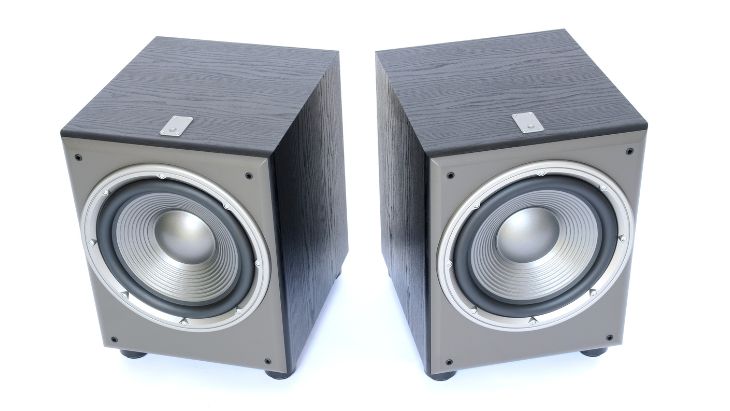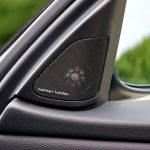Most cars come with basic speakers. Factory speakers only reproduce limited sound frequencies. They don’t deliver decent bass. Even when you upgrade your factory speakers with new aftermarket speakers, you’ll still fail to get deep, punchy bass. While there’re aftermarket speakers that deliver some decent bass, the bass is never as deep as what you’d get with a dedicated subwoofer. Subwoofers are specially designed to reproduce low frequencies. Thus, if you’re a lover of bass, then you should add a subwoofer to your car stereo system. There’re different types and sizes of car subwoofers available in the market today. Read on through this proper guide on types and sizes of car subwoofers to know the best option for you.
Types of Car Subwoofers
Car subwoofers vary in terms of design, thereby bringing about different types of subwoofers. Regardless of the design, they’re all built to reproduce lows. However, each type of car sub is ideal for installation in a specific area of the car. Your car space and budget will largely determine the type of sub ideal for your car. With that said, here’re the main types of car subs:
1. Powered Subwoofers

Powered car subs are one of the most commonly used car subs. These subs are also known as active subwoofers. They are known as active since they have their own inbuilt amplifier. The amplifier and the driver are housed in one sub-box. Since powered subwoofers have their own amp, they don’t take a lot of power from the receiver. You’ll simply connect them directly to the receiver rather than an external amp. You’ll leave the external amp to power component speakers. Actually, most modern receivers come with pre-amp outputs that are ideal for connecting powered subs.
A powered sub usually takes a lot of car space. Thus, it’s ideal for installation in a car trunk. As such, it’s only ideal for cars with a lot of space. If your car space is limited, then you might have to consider another type. Powered subs are also a little bit more expensive, but you won’t have to buy an external amp. Thus, they’re worth their higher price since the overall cost will balance in that you won’t have to buy an external amp.
2. Passive/standard Subwoofers
Another type of subwoofers is passive subwoofers. They’re also known as standard subwoofers. They’re passive in design for they require an external power source. You’ll have to connect them to an external car amp. They only comprise a low-frequency driver. Most of them come without an enclosure. They look like regular speakers, only that they’re designed to reproduce bass.
Passive subs are ideal for installation in cars with limited space. Since they don’t come with an enclosure, they can fit in the smallest car space. You can easily fit them in your car doors or the back dash. They’re less expensive than powered subs, but you’ll need to invest in an external amp. Thus, the final cost will be higher. They demand a lot of power such that standalone receivers are never able to power them efficiently. You’ll have to connect them to an external car amp for the best results. The amount of power needed to power the passive sub will depend on its power specifications. Thus, once you determine the kind of passive sub you need for your car, you’ll be able to tell the kind of amp you need. If you already have an amp, then buy a passive subwoofer that can be efficiently powered by your car amp.
You can enhance the bass effect of a passive subwoofer by enclosing it in a subwoofer box. You can choose between a ported, sealed, and bandpass subwoofer box. Sealed sub boxes offer the deepest, tightest, and most accurate bass. On the other hand, the bass in ported and bandpass boxes is less deep but louder than that in sealed boxes. Thus, if you want louder but less accurate bass, then ported and bandpass sub boxes will be better. You can make your own sub-box or buy a premade one. The size of the box should match the size of the subwoofer for the best performance.
3. Bass Tubes
Bass tubes are another type of car subs. In bass tubes, the driver is built in a tube enclosure. Bass tubes are ideal for cars with limited space. They’re compact in size due to the tube enclosure design such that they don’t take a lot of space. Although they’re not as loud as regular subwoofers, they offer a great bass upgrade while saving space. They’re easy to install, making them a great choice for DIY installation.
4. Vehicle-specific Subwoofer
This type of car subwoofer is customized to fit in a specific car. The sub is designed to specifically meet the needs of a certain car type and a specific installation location. Thus, they’re ideal where you want a sub that can be fitted in a specific location, especially where space is limited. Thus, anyone with limited car space would find this type of sub a great option. However, they’re often small in size, making them less powerful than the other types of subs. Nevertheless, they deliver decent bass.
5. Shallow mount subwoofers
Just like their name suggests, shallow mount subwoofers are a special type of subwoofers designed to have a shallow mounting depth. This makes them suitable for installation in tight spaces such as under the car seat and in the back dashboard. They’re also ideal for installing in small-sized car trunks or those that carry a lot of luggage. These subwoofers are beneficial in that they take little space and offer tight bass. However, they’re not powerful enough for loud, booming bass.
Car Subwoofer Sizes
Subwoofers come in different sizes. The size of the sub-matters a lot. For instance, if you have limited car space, you’ll definitely need a smaller sub. If your car is spacious enough, then you can buy the largest sub. Basically, a bigger sub doesn’t make it the best. What matters more is the quality of the sub and its power handling. However, larger subs offer louder and more shaking bass so long as their power rating is on the higher side. A smaller sub would have to work extremely hard to produce loud bass. Here’re the different car subwoofer sizes:
6-inch Subwoofers
6-inch subs are the smallest car subs you can find. They range from 6-inch to 6.5 inches and 6.75 inches. They’re compact in design, making them ideal for installation in the smallest car spaces. You can install them on your car doors or beneath the seats. However, they’re not the best for loud bass.
8-inch Subwoofers
8-inch car subs are one of the most commonly used subwoofer sizes. They’re ideal for fitting in most car spaces. They reproduce accurate and tight bass. Thus, if you’re looking for accurate and clear bass, then they’re the size for you. However, they’re not the best for loud and earth-shaking bass. They can also be installed on the car doors or under the seats.
10-inch Subwoofers
10-inch subwoofers are more common for car owners who love deeper bass but still want a compact subwoofer. Thus, they deliver more powerful bass while still taking less space. They create a great balance between accuracy and loudness. However, it’s not the most booming size for an audiophile.
12-inch Subwoofers
Car music lovers who prefer more booming and louder bass would find 12-inch subs as a great option. However, they’re large in size such that they take up more car space. They’re ideal for installation in spacious cars. They’re best installed in the trunk. Due to their larger size, they offer less accurate bass than the smaller sizes.
15-inch Subwoofers
15-inch subwoofers are quite large and less common. They’re best for loud and earth-shaking bass. Audiophiles who deep bass would surely like them. However, their bass response has less accuracy. They’re most suitable for more spacious cars with large trunks such as station wagons, SUVs and trucks.
18-inch Subwoofers
Want to go extreme with bass? If so, you can try the largest car subs you can find in the market today, which are the 18-inch subs. These subs are extremely powerful. They deliver the loudest and most booming bass. However, they have the least responsiveness due to their extremely large size. Due to their large size, they’ll take most of your trunk space such that you’ll hardly have any space left to carry large cargo. Thus, if you prefer such extremely large subwoofers, you’ll have to sacrifice carrying large cargo in your trunk. Nevertheless, you’ll surely win a bass competition with this size.
Final Words
When planning to add bass to your car sound system, a subwoofer will do a better job than the most powerful speakers. Subwoofers only reproduce the lowest frequencies. With a great subwoofer, you’ll enjoy hearing the lowest frequencies in your favorite music. The type and size you’ll choose will mainly depend on your needs, available car space, and budget. With this proper guide on types and sizes of car subwoofers in mind, you’ll stand better chances of getting the best sub for your car.
Michael Evanchuk is a San Francisco-based sound engineer with 20 years’ experience installing, troubleshooting, and repairing commercial, automotive, and household sound equipment. Evanchuk owns an auto stereo center, where he offers highly competitive car audio installation and repair services. He has written dozens of articles on different sound engineering topics, all of which have been published in leading journals, blogs, and websites.






